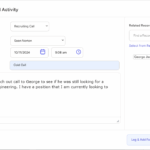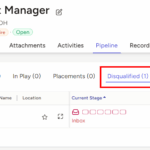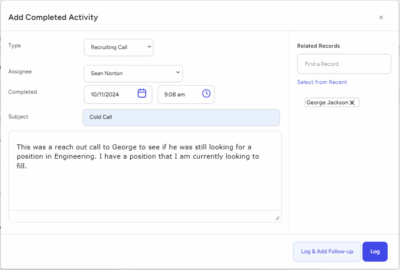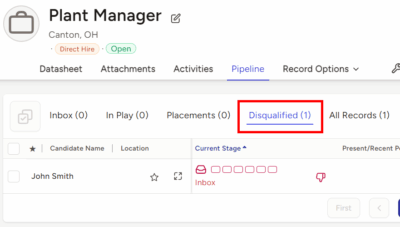Diversity and inclusion have become crucial factors in creating a successful workplace. Companies that invest in diversity and inclusion see the benefits of a more engaged and productive workforce, improved decision-making, and enhanced innovation.
What is a Diversity and Inclusion Strategy?
A diversity and inclusion strategy is a plan of action that an organization develops to promote and support diversity, equity, and inclusion in the workplace. It outlines the organization’s goals and objectives for creating a diverse and inclusive workplace and provides a framework for implementing policies, programs, and practices to achieve those goals.
A diversity and inclusion strategy typically includes a range of initiatives designed to promote diversity and inclusion in the workplace. This may include efforts to attract and retain diverse talent, provide training and development opportunities for underrepresented groups, and create a culture of inclusivity that supports all employees.
The goals of a diversity and inclusion strategy may include increasing the representation of underrepresented groups in the workplace, promoting equal access to opportunities and resources, and creating a more inclusive culture that values diversity and respects individual differences.
A well-designed diversity and inclusion strategy can benefit an organization in numerous ways, including increased innovation, better decision-making, improved employee engagement and retention, and enhanced reputation and brand image.
How to Create a Diversity and Inclusion Strategy
A diversity and inclusion strategy is a plan of action that an organization develops to promote and support diversity, equity, and inclusion in the workplace. It outlines the organization’s goals and objectives for creating a diverse and inclusive workplace and provides a framework for implementing policies, programs, and practices to achieve those goals.
We shall now discuss the steps involved in creating a successful diversity and inclusion strategy, including best practices for building a more inclusive workplace.
Step 1: Define Diversity and Inclusion
Defining diversity and inclusion is a crucial first step in creating a diversity and inclusion strategy. Without a clear understanding of what these terms mean and why they are important, it is difficult to develop effective policies and practices to support diversity and inclusion in the workplace.
Diversity refers to the range of differences that exist among individuals, including differences in race, ethnicity, gender, age, sexual orientation, ability, and more. Diversity is not just about meeting legal requirements, but also about creating a workplace that values and respects individual differences and promotes a culture of inclusivity.
Inclusion, on the other hand, refers to creating an environment where everyone feels welcome, valued, and respected. Inclusive workplaces actively seek out and embrace diverse perspectives and backgrounds, and promote equal access to opportunities and resources for all employees.
Defining diversity and inclusion is important because it provides a shared understanding and language for discussing and addressing these issues in the workplace. It helps to clarify the organization’s goals and objectives, and can guide the development of policies and practices that promote diversity and inclusion.
Defining diversity and inclusion is a critical first step in creating a diversity and inclusion strategy. It helps to establish a shared understanding and language for addressing these issues in the workplace, and can guide the development of policies and practices that promote diversity, equity, and inclusion.
Step 2: Assess Your Current State
Assessing your organization’s current state is a critical second step in creating a diversity and inclusion strategy. This involves evaluating the current state of diversity and inclusion within the organization, including the demographics of the workforce, the culture and policies related to diversity and inclusion, and any existing programs or initiatives.
To assess the current state of diversity and inclusion, companies can conduct a thorough analysis of their workforce data, including information on race, gender, age, and other demographic factors. This analysis can help to identify any gaps or disparities in representation, as well as areas where the company may need to focus its efforts.
In addition to analyzing workforce data, companies can also gather feedback from employees on their experiences with diversity and inclusion in the workplace. This can include conducting surveys, focus groups, or one-on-one interviews with employees.
By conducting a comprehensive assessment of the current state of diversity and inclusion within the organization, companies can identify areas where they need to focus their efforts, as well as opportunities for improvement. This information can then be used to develop targeted strategies and initiatives to create a more inclusive workplace culture.
Step 3: Set Goals
Setting goals is a crucial step in creating a diversity and inclusion strategy. Goals provide a clear direction and purpose for the organization’s diversity and inclusion efforts, and help to measure progress and outcomes.
When setting goals for a diversity and inclusion strategy, it is important to ensure that they are specific, measurable, attainable, relevant, and time-bound (SMART). This means that goals should be clearly defined, quantifiable, achievable, aligned with the organization’s mission and values, and have a deadline for completion.
Goals for a diversity and inclusion strategy might include increasing the representation of underrepresented groups in the workplace, improving diversity in leadership positions, providing training and development opportunities for underrepresented groups, creating a more inclusive culture, and promoting equal access to opportunities and resources for all employees.
Setting goals also involves establishing metrics for measuring progress and outcomes. This might include tracking the diversity of the workforce, measuring employee satisfaction and engagement, and monitoring retention rates for underrepresented groups.
Regularly reviewing and adjusting goals and metrics is also important for ensuring that the organization’s diversity and inclusion strategy remains relevant and effective over time.
Setting goals is a critical step in creating a diversity and inclusion strategy. Goals provide a clear direction and purpose for the organization’s diversity and inclusion efforts, and help to measure progress and outcomes. It is important to ensure that goals are specific, measurable, attainable, relevant, and time-bound (SMART), and to regularly review and adjust them to ensure that the strategy remains effective over time.
Step 4: Develop Strategies
Developing strategies is a critical fourth step in creating a diversity and inclusion strategy. This involves identifying specific actions and initiatives that the company can take to promote diversity and inclusion in the workplace.
To develop effective strategies, companies should consider the goals and objectives they identified in the first step of the process. They should also take into account the results of their assessment of the current state of diversity and inclusion in the organization, as well as feedback from employees.
Strategies should be focused on specific areas where the company needs to improve its diversity and inclusion efforts. For example, a company may develop a strategy to increase the representation of underrepresented groups in leadership positions, or to create more inclusive hiring and promotion practices.
Effective strategies should also be aligned with the company’s overall mission and values. They should be supported by leadership and integrated into the company’s overall business strategy.
By developing targeted strategies to promote diversity and inclusion in the workplace, companies can create a more inclusive culture and reap the benefits of a diverse workforce, including increased innovation, improved decision-making, and enhanced employee engagement and satisfaction.
Step 5: Communicate and Implement
Communicating and implementing strategies is a crucial step in creating a diversity and inclusion strategy. Once the strategy has been developed, it must be effectively communicated and implemented to ensure that it is successful.
Effective communication involves clearly and consistently sharing the organization’s diversity and inclusion goals, policies, and practices with all employees. This might include training sessions, workshops, internal communications, and regular updates on progress and outcomes.
It is also important to involve all employees in the implementation of the diversity and inclusion strategy. This might involve creating employee-led committees or task forces to help promote diversity and inclusion, and to provide feedback and suggestions for improvement.
In addition to communication and employee involvement, the organization must also ensure that its policies and practices align with its diversity and inclusion goals. This might involve reviewing and revising existing policies and practices, such as hiring and promotion processes, to promote diversity and inclusion.
It is also important to provide resources and support to employees who may be impacted by the organization’s diversity and inclusion efforts. This might include providing mentorship or sponsorship programs, employee resource groups, and other forms of support to promote equity and inclusion.
Effective communication and implementation are crucial steps in creating a diversity and inclusion strategy. It is important to communicate the organization’s diversity and inclusion goals, policies, and practices clearly and consistently, involve all employees in the implementation process, and ensure that policies and practices align with diversity and inclusion goals. Providing resources and support to employees is also important to promote equity and inclusion in the workplace.
Best Practices for Building a More Inclusive Workplace
Inclusion is a critical aspect of a healthy and productive workplace. An inclusive workplace culture encourages all employees to participate fully, regardless of their background, identity, or experience. Creating a more inclusive workplace requires ongoing effort and commitment from leaders and employees alike. In this article, we will explore some best practices for building a more inclusive workplace.
Set Clear Expectations
One of the most important steps in building an inclusive workplace is setting clear expectations for behavior and language. All employees should understand that discrimination and harassment of any kind will not be tolerated. Leaders should model this behavior by speaking up when they witness discriminatory or inappropriate behavior.
In addition, companies should develop clear policies and procedures for addressing discrimination and harassment complaints. These policies should be communicated to all employees and should provide a clear process for reporting and investigating incidents.
Promote Diversity
Promoting diversity is a key aspect of building an inclusive workplace. This can include recruiting a diverse workforce, ensuring that all employees have equal access to professional development opportunities, and creating a culture that values diversity of thought and perspective.
Companies can take steps to promote diversity by removing barriers to entry for underrepresented groups, such as providing mentorship and training programs specifically designed for women, people of color, or other marginalized groups. Additionally, companies can work to eliminate bias in the hiring process by using objective hiring criteria and blind resume screening.
Provide Training and Education
Providing training and education to employees on topics such as diversity, inclusion, and unconscious bias can help to create a more inclusive workplace. This can include training sessions, workshops, or online courses that are designed to promote understanding and awareness of different perspectives and experiences.
Leaders should also be provided with training on how to effectively manage and support diverse teams. This can include training on how to address bias or discrimination in the workplace, how to provide feedback to diverse employees, and how to create an inclusive team culture.
Foster a Sense of Belonging
Fostering a sense of belonging is another important aspect of building an inclusive workplace. This can include creating opportunities for employees to connect and build relationships with one another, such as team-building activities, mentorship programs, or employee resource groups.
Leaders can also help to create a sense of belonging by actively seeking out and valuing diverse perspectives and experiences. By actively listening to and incorporating feedback from all employees, leaders can create a culture where all employees feel valued and included.
Address Unconscious Bias
Unconscious bias is a natural tendency for the human brain to make assumptions and judgments based on past experiences and stereotypes. However, unconscious bias can have a negative impact on diversity and inclusion in the workplace. To address unconscious bias, companies can provide training and education on the topic, as well as implement strategies such as blind resume screening or structured interview processes.
Evaluate and Measure Progress
Evaluating and measuring progress is an important aspect of building a more inclusive workplace. Companies can conduct surveys or focus groups to gather feedback from employees on their experiences with diversity and inclusion in the workplace. This feedback can be used to identify areas for improvement and to develop targeted strategies to address any issues.
In addition, companies can track diversity metrics such as the percentage of underrepresented groups in leadership positions or the retention rate of diverse employees. By regularly evaluating and measuring progress, companies can ensure that they are making meaningful strides towards creating a more inclusive workplace.
Celebrate Differences
Finally, celebrating differences is an important aspect of building a more inclusive workplace. This can include celebrating holidays or cultural events that are important to employees from different backgrounds, or simply creating opportunities for employees to share their unique perspectives and experiences.
Leaders should also recognize and value the contributions of all employees, regardless of their background or identity. By celebrating differences and creating a culture that values
Diversity and Inclusion Strategy and Talent Management Software
Diversity and inclusion are critical components of a successful talent management strategy. Organizations that prioritize diversity and inclusion are better able to attract and retain top talent, foster innovation, and create a more positive and productive workplace culture. Talent management software can play an important role in supporting a company’s diversity and inclusion strategy.
One way that talent management software can support diversity and inclusion is by providing tools to help companies track and analyze their workforce demographics. This can include data on gender, race, ethnicity, and other diversity metrics. By tracking this data, companies can identify areas where they may need to improve diversity and inclusion efforts and set measurable goals to increase representation and create a more inclusive workplace.
Another way that talent management software can support diversity and inclusion is by providing tools to help companies reduce bias in hiring and promotion decisions. This can include features such as blind resume screening, which removes identifying information such as name and address from resumes, and assessment tools that are designed to be free from bias.
Talent management software can also support diversity and inclusion by providing training and development opportunities that are tailored to the needs of diverse employees. This can include language training for non-native English speakers, cultural competency training, and leadership development programs that are designed to support diverse candidates.
Talent management software can play an important role in supporting a company’s diversity and inclusion strategy. By providing tools to track and analyze workforce demographics, reduce bias in hiring and promotion decisions, and offer training and development opportunities that are tailored to the needs of diverse employees, talent management software can help companies create a more inclusive and diverse workplace culture.








